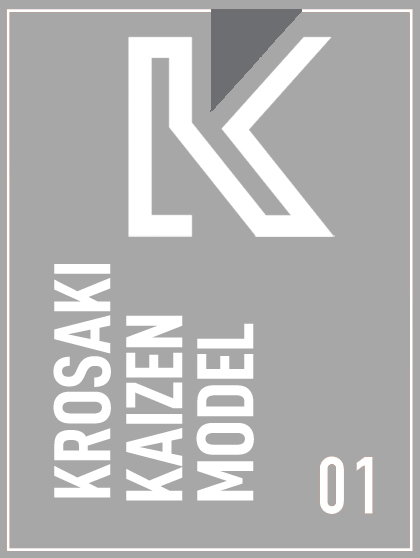Cosa stiamo facendo
Abbiamo una ricchezza e una profondità di conoscenza qui a Krosaki e pensiamo che la condivisione sia la strada giusta per andare avanti. Leggi l'astratto qui sulla pagina ‘Published Academic Papers' e poi contattaci tramite il modulo se vuoi saperne di più. Non dimenticare di spuntare la casella se vuoi che il creatore dei documenti ti contatti. Pubblicheremo un nuovo giornale ogni due settimane, quindi continuate a controllare.
Astratto dal giornale:
Corrosion process of a high alumina brick exposed to molten iron at temperatures between 1500 and 1650 °C was studied. Microstructure of the brick was analysed by SEM and EDS to clarify the corrosion process. The corroded zone of the brick by the molten pig iron was characterized by the disappearance of SiO2 component and the existence of metallic iron. On the other hand, in the area corroded by the steel, the coexistence of alumina and Al-Si-Fe-O system glassy phases was observed. Analysis based on the thermodynamic equilibrium of reaction in the system suggested that SiO2 from mullite phase and the matrix of the brick was preferentially corroded by the carbon in the molten iron.
Authors:
Masaaki Mishima, Jyouki Yoshitomi and Tsuneo Kayama
MESSA A FUOCO DELL'OGGETTO: Siviere Ghisa
Archivio:
September 2021 - RH Degasser - Evaluation of the Refractories for Application to the RH Degasser
RH (Ruhrstahl-Heraus) is one of the common examples of sucking-type degassers used in the secondary refining of steel. Some research has been conducted on refractory wear on the side wall of the RH degasser lower vessel. The damage of the refractories in this area increases by operational practices such as oxygen blowing and powder blowing for refining the steel into purified high-grade one. Such damage is caused by the formation and penetration of oxides of metals such as Fe, Si, and Al on the hot surface and also these oxides lead to lowering of melting temperature of the refractories. However, there are few reports focusing on the damages from such oxides formed on the hot surface. In this paper, therefore, the damage mechanism of the refractories against the oxides of Al and Si is discussed in detail.
August 2021 - Steel Ladle - Development of automatic repair technology by continuous and quick mixing technology
In conventional wet-gunning it is not easy to decrease the amount of water in the gunning mix because the mix has to be pressurized and transported smoothly through hoses. An excessive amount of water in the mix often results in poor durability of the body of the gunned material. A newly developed method, Continuous Quick Mixing & Repairing Technology (QMS), does not require the gunning mix to be transported through hoses, and therefore the amount of water can be decreased. As a result, the installed body obtained by the QMS method, has higher quality than that by the wet-gunning method. Furthermore, a cleaning job after the gunning repair is as easy and simple as that after dry-gunning. This paper describes the development of QMS and the improved durability of the gunned material.
July 2021 - Steel Ladle - Durability Improvement of BOF Taphole Sleeves by Optimizing Refractory Material Design
The performance of taphole sleeves seriously influences the productivity of BOF operation. There is a growing need for excellent spalling resistance, constant duration of tapping and longer service life, to reduce the frequency of taphole repair. Taphole sleeves are damaged mostly by spalling, oxidation and corrosion by BOF slag. This paper explores two types of taphole materials which have been developed in pursuit of an appropriate balance between spalling resistance and anti-oxidation. One is obtained by focusing on the prevention of gaseous oxidation without sacrificing the spalling resistance, and the other by enhancing oxidation resistance against Fe-oxide. MgO-C bricks of two types have contributed to realize high productivity of BOF operation for many customers.
June 2021 - Ladle Flow Control - Influence of the Physical Properties and Mechanical Constraint on the Thermal Shock Resistivity of SN Plate.
The paper explores a realistic evaluation method for thermal shock (spalling) resistance of slide gate plates. Usually, an evaluation of spalling resistance is done under non-constrained conditions, which may not represent an actual condition in which these plates are used. The authors attempt to evaluate spalling resistance using an equipment “SN sliding tester” which replicates an actual slide gate, compare the results of evaluation and actual casting, and confirm the effectiveness of this evaluation method.
June 2021 - Tundish Flow Control - Flow Optimization in the Mould by Port Design Improvement of Submerged Entry Nozzle.
Various attempts have been made to improve the steel flow in the mould by changing the design of the port of a submerged entry nozzle (SEN) for continuous casting process in steel plants. In continuous casting operation, the importance of producing high-quality steel and at the same time having high productivity has become more important than ever. This paper explores the SEN port design which optimises the steel flow in the mould, reduces meniscus fluctuation, minimizes the resulting mould powder inclusion, and contributes to the steel quality improvement.
For more information or if you have any question please send an email to us at Krosaki.

